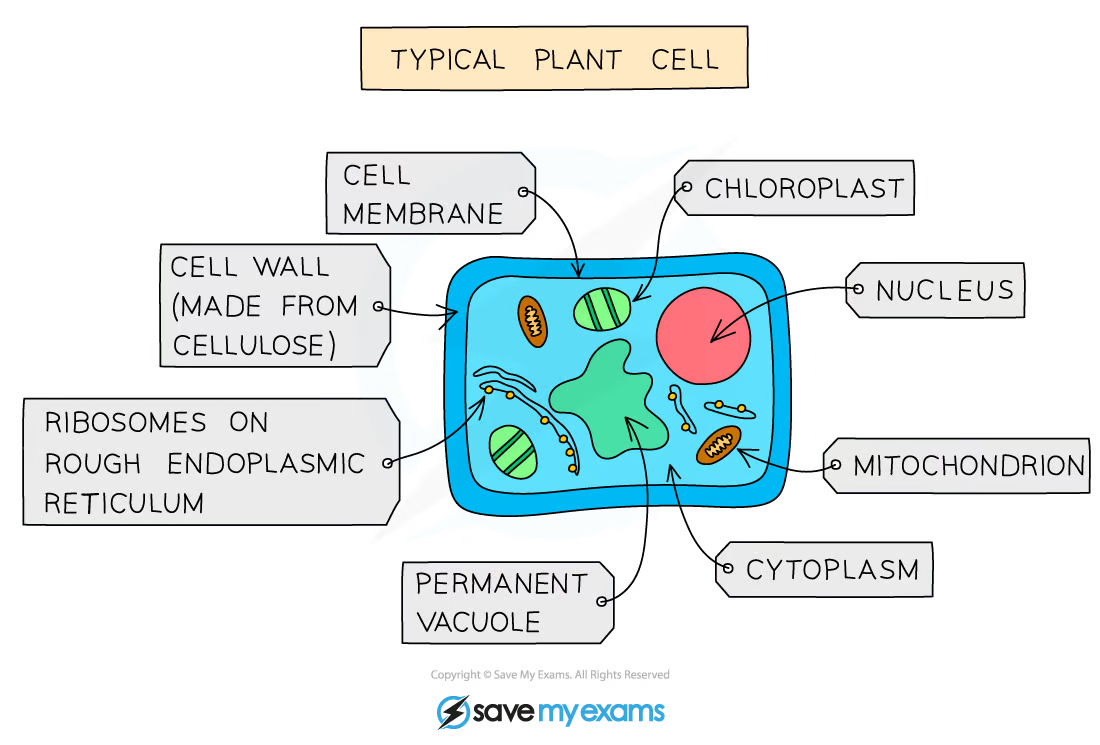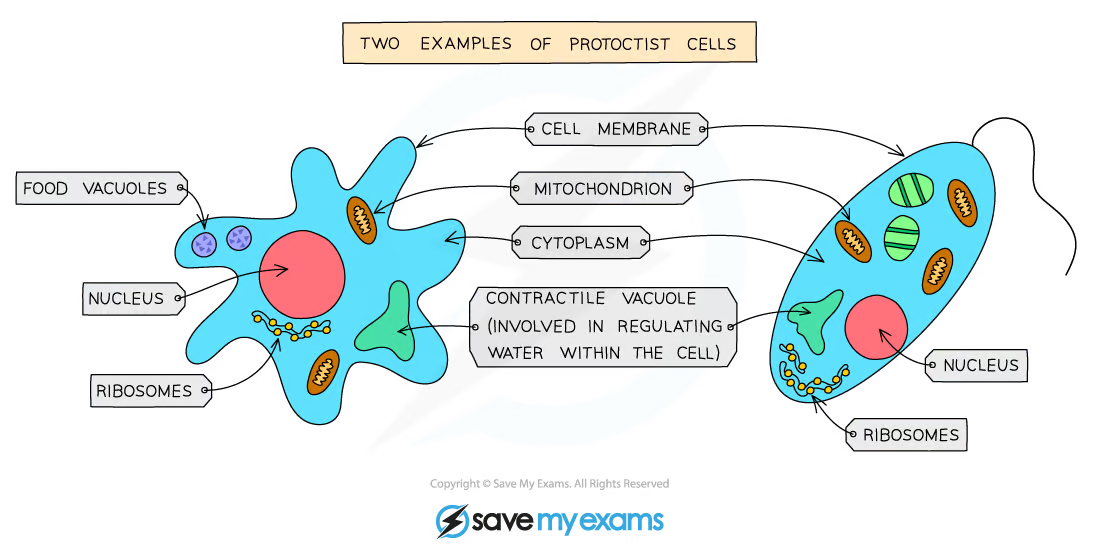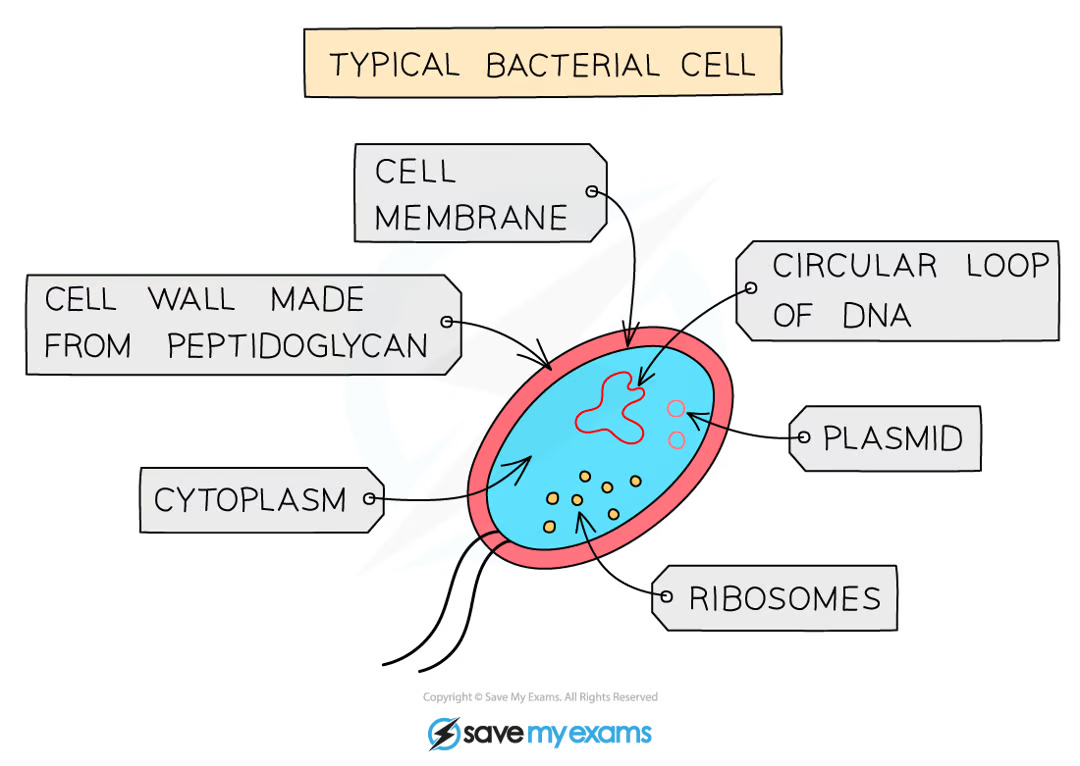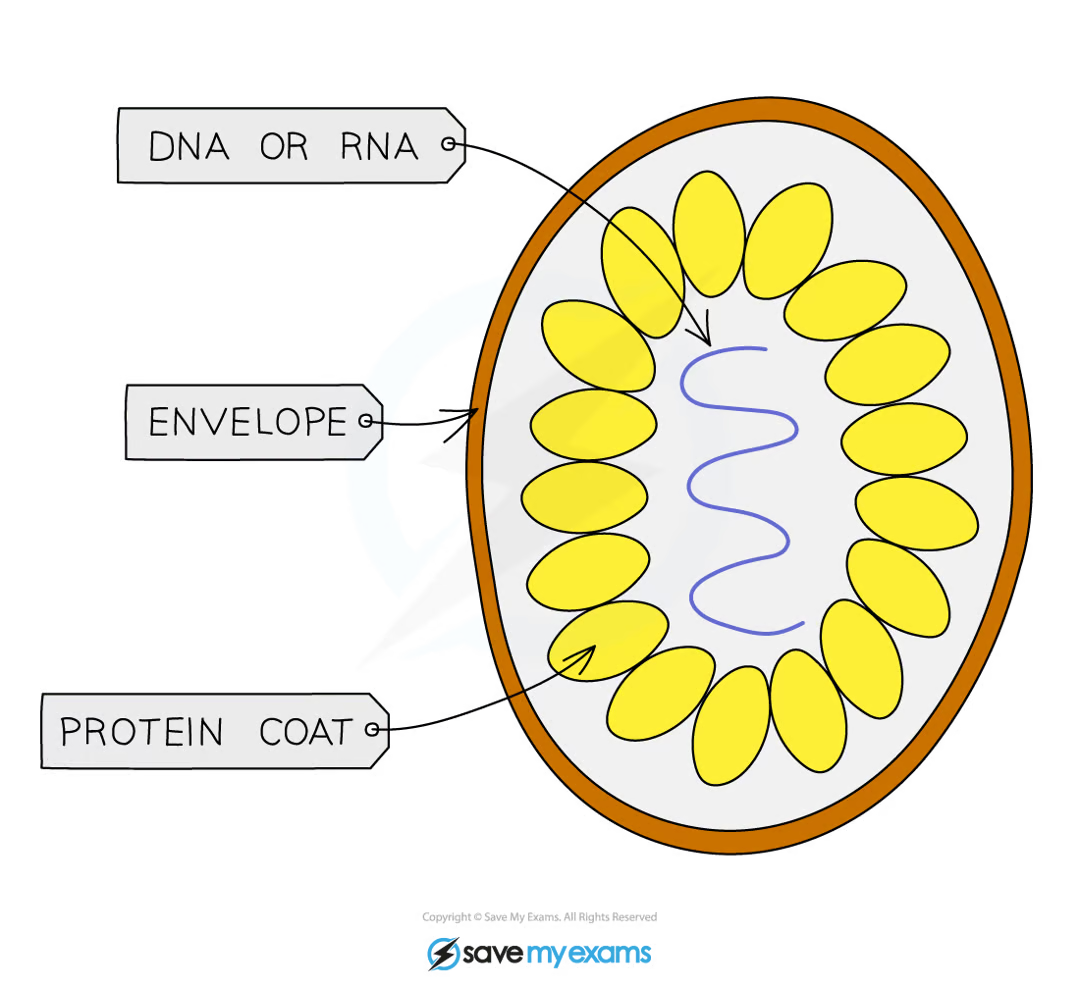1. The Nature and Variety of Living Organisms
1/35
Earn XP
Description and Tags
Characteristics of living organisms, Eukaryotic organisms, Prokaryotic organisms, Pathogens
Name | Mastery | Learn | Test | Matching | Spaced |
|---|
No study sessions yet.
36 Terms
what characteristics must something have to be considered ‘living’? what do they mean?
M - movement
R - respiration
S - sensitivity
G - growth
R - reproduction
E - excretion
N - nutrition
C - control
what is nutrition? (mrs gren)
organisms must obtain food to provide energy
what is respiration? (mrs gren)
respiration is a chemical reaction carried out in all living organisms
energy is released from glucose and results in the production of co2 and water
energy is transferred in the form of atp
what is excretion? (mrs gren)
the removal of toxic materials and substances (produced from metabolic reactions) from organisms
what is sensitivity? (mrs gren)
the ability of an organism to detect and respond to stimuli in its surroundings
what is movement? (mrs gren)
an action by an organism causing a change of position or place
what is control? (mrs gren)
ability of living organisms to control their internal environment to keep conditions within required limits (homeostasis)
what is reproduction? (mrs gren)
the process that leads to the production of more of the same kind of organism
what is growth? (mrs gren)
an organism’s ability to permanently increase in size
what are the five kingdoms? which are eukaryotic and which are prokaryotic?
animals
plants
fungi
protoctists
prokaryotes
what are 2 features of eukaryotic organisms?
can be multicellular or single-celled
are made up of cells that contain a nuclear with a distinct membrane
what are 2 features of prokaryotic organisms?
are always single-celled
do not contain a nucleus (instead have nuclear material in the cytoplasm)
what are are 3 features of plants cells?
cells contain a nucleus with a distinct membrane
cells have cell walls made out of cellulose
cells contain chloroplasts
are plants multicellular or single-celled?
multicellular
how do plants feed and store carbohydrates?
plants feed by photosynthesis
they store carbohydrates as starch or sucrose
do plants have nervous coordination?
no
what structures are found in plant cells? what do the plant only structures do?
hint: 5 + 3
cytoplasm
nucleus
mitochondria
ribosomes
cell membrane
vacuole - contains cell sap (solution of sugars + salts dissolved in water); used for storage, helps support shape of the cell
chloroplasts - contain green chlorophyll pigment and enzymes for photosynthesis
cell wall - made of cellulose (polymer of glucose); gives cell extra support

what are 3 features of fungi cells? are they parasitic? do they have nervous coordination?
cells contain a nucleus with a distinct membrane
cells have cell walls made of chitin
cells do not contain chloroplasts
some are parasitic
do not have nervous coordination
are fungi single-celled or multicellular?
usually multicellular, but some are single-celled (e.g. yeast)
how do fungi feed and store carbohydrates?
fungi feed by secreting extracellular digestive enzymes onto the food and then absorbing the digested molecules. this is known as saprotophic nutrition
some store carbohydrates as glycogen
what are 3 examples of fungi?
moulds, mushrooms, yeasts
what structures are found in fungi cells? how is a multicellular fungus structured?
hint: 5
nucleus
cytoplasm
ribosomes
cell membrane
cell wall
multicellular fungi are made up of thread-like structures called hyphae that contain many nuclei and are organised into a network known as a mycelium

what are 7 main features of protoctists? what are some examples?
very diverse kingdom of organisms that don’t belong in any other eukaryotic kingdoms
mainly microscopic and single-celled but some aggregate into larger forms
cells contain a nucleus with a distinct membrane
some have features making them more like animal cells (eg. Plasmodium which causes malaria)
some have features like cell walls and chloroplasts making them more like plant cells (eg. green algae, Chlorella)
some protoctists photosynthesise, some feed on other organic substances
do not have nervous coordination
examples: amoeba, Paramecium, Plasmodium, Chlorella

what are 3 features of prokaryotes? what is an example?
single-celled
no nucleus
nuclear material is found in the cytoplasm
example: bacteria
what are 4 features of bacteria? what do their cells look like? what are some examples?
microscopic, single-celled organisms
have a cell wall, cell membrane, cytoplasm, and plasmids
lack a nucleus but contain circular DNA
lack mitochondria and have no other membrane-bound organelles
examples: Lactobacillus (rod-shaped and used in the production of yoghurt from milk) and Pneumococcus (spherical and acts as the pathogen causing pneumonia)

how can bacteria feed?
some carry out photosynthesis without chloroplasts (they possess chlorophyll and the enzymes required)
most feed on other living or dead organisms
if they feed on dead organic matter, they are known as saprobionts or decomposers
components of prokaryotic and eukaryotic cells
Component | Eukaryotes | Prokaryotes |
|---|---|---|
Cell membrane | Y | Y |
Cytoplasm | Y | Y |
Genetic material | Y - in a nucleus | Y - in the cytoplasm |
Nucleus | Y | N |
Cell wall | Some types | Y |
what is a pathogen? what are some examples?
any microorganism that causes disease in another organism
examples: bacteria, fungi, protoctists, viruses
how do pathogenic bacteria work? what is the bacteria causing TB?
pathogenic bacteria do not always infect the hosts of cells - they can remain within body cavities or spaces
M. tuberculosis causes TB
bacteria infect the lungs, causing chronic cough and bloody mucus
often associated with poor hygeine
M. bovine in cows can transmit to humans to cause TB
what are some examples of pathogenic fungal diseases? where are they most threatening?
cattle ringworm and athletes foot
black sigatoka is a fungal disease in bananas
fungal diseases in plants tend to be much more serious and can threaten entire crops
what is a disease caused by a protoctist? what is the protoctist called?
malaria
Plasmodium falciparum
what are 4 characteristics of viruses?
they are small particles (smaller than bacteria)
they are parasitic and can only reproduce inside living cells
they infect every type of living organism
they have no cellular structure but have a protein coat and contain one type of nucleic acid, either DNA or RNA

what are 3 examples of viruses?
TMV (tobacco mosaic virus)
HIV virus, causing AIDS
influenza virus, causing the flu
what is TMV? how is it spread? is there a cure?
TMV was the first virus to be isolated by scientists
it infects tobacco plants and causes distinct mosaic patterns of discolouration on the leaves, and the plants do not grow due to lack of photosynthesis
it is spread by plants being in direct contact with infected plants
no treatment
what is HIV? what are the symptoms? how is it spread? is there a cure?
HIV (Human Immunodeficiency Virus) can eventually lead to AIDS (Acquired Immonodeficiency Syndrome)
starts with a flu-like illness
if untreated it can travel to lymph nodes and attack cells of the immune system
it can stay hidden in the immune system for many years until the immune system is so badly damaged it can no longer deal with other infection or cancers
spread by direct sexual contact
the exchange of bodily fluids
from mother to child during birth or in breast milk
there is no cure
what are the 3 influenza viruses? what are the symptoms of the flu? which virus causes the most infections?
influenza A, influenza B, and influenza C
infects the cells that line the airways
causes a high temperature, body aches, and fatigue
influenza A is the virus that causes the most cases of flu